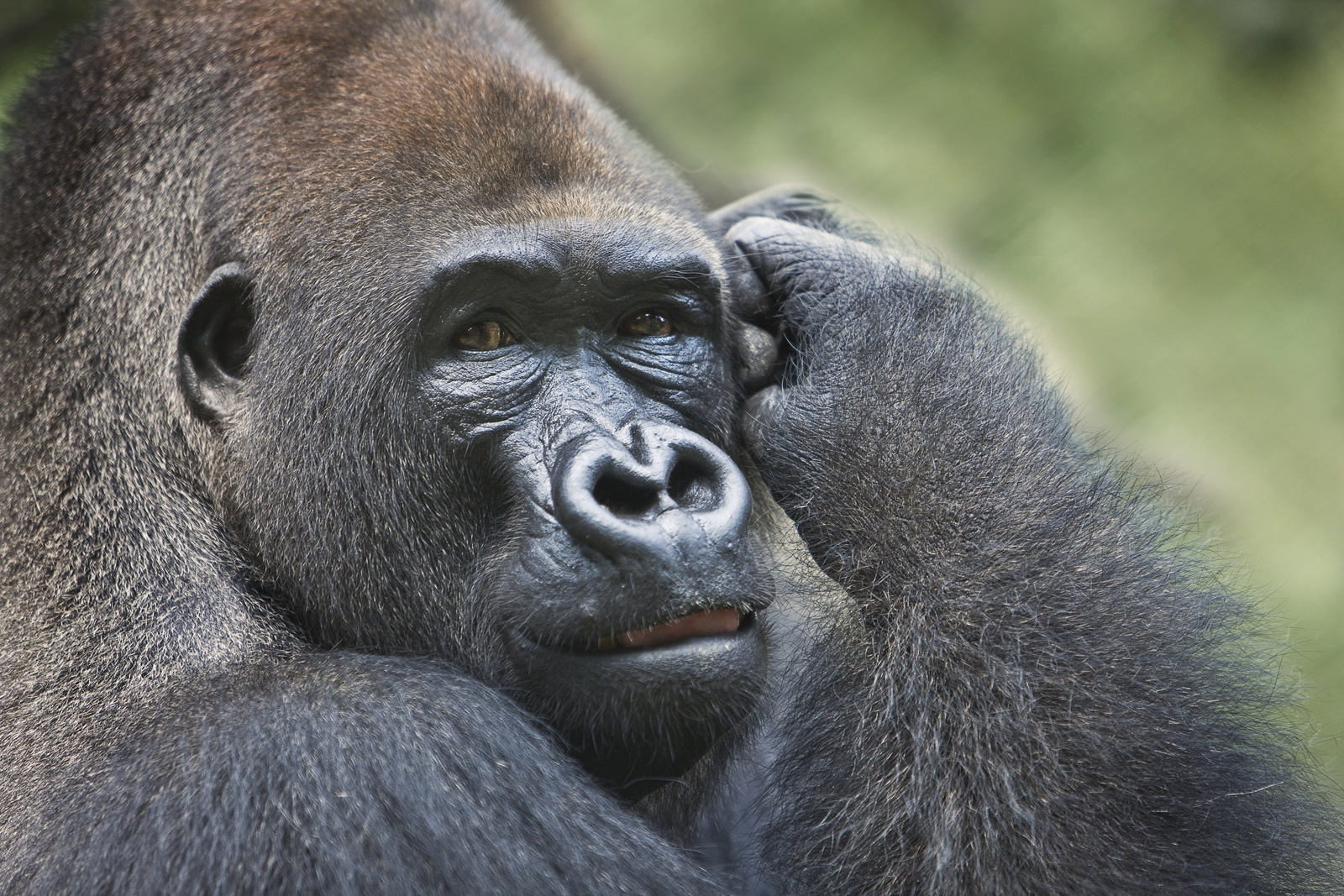The one and only ivan
THE ONE AND ONLY IVAN
Robotic dolphins, CGI gorillas. Is there a future for wild animals in entertainment, asks Dr Chris Draper, Born Free’s Head of Animal Welfare and Captivity?

After the unveiling in June of a lifelike animatronic dolphin (£20m) that will, it is claimed, negate the need to use live dolphins in captive shows, and the recent release of two beluga whales from captivity in China to a sanctuary, this week has seen the release of Disney’s film The One and Only Ivan, the (mostly) true story of a wild-caught gorilla exploited for years in captivity.
Ivan’s film features an impressive range of photorealistic CGI animals. Reportedly, no live animals were used in filming, demonstrating that so much more can be achieved using this technology than the ‘bad old days’ which relied on trained – and often abused – wild animals being on set.
Does this mean we are heading for a future without wild animals forced to perform or live a lifetime in captivity for our ‘entertainment’?
Ivan’s true story is a woeful tale of exploitation. After capture from the wild as an infant, he was raised in a house akin to a human child before being relegated (as he had become too big to handle) to an enclosure in a shopping mall as the star attraction of a circus show. There, this highly intelligent and naturally social great ape spent a shocking 27 years in solitude without the company of his own kind. The film version ends with Ivan eventually waking up in a sterile featureless room where, bizarrely, the wall retracts revealing an almost paradisiacal lush green landscape, his new lifetime home where he encounters friends old and new. In reality, Ivan’s retirement was spent at the rather less Elysian Zoo Atlanta, albeit a step-up from his life in a shopping mall.
While he can now be portrayed on film by CGI, could the real Ivan have been spared a life in confinement if truly lifelike animatronic animals had been available during the decades he was made to perform? Could his role in the shopping centre show have been replaced by technology? It is a tantalising thought. Unfortunately, zoos and dolphinaria, while possibly in long-term decline, remain stubbornly popular across the world: any collective guilt over the exploitation of wild animals as visitor attractions is partly assuaged by mostly spurious claims that these facilities are educational and helping to save threatened species.
And what of Disney, the company behind The One and Only Ivan, whose empire began on the fortunes of cartoon representations of animals? Sadly, despite the story and the positive steps taken by the producers of the film, Disney continues to operate captive wild animal visitor attractions, including their Animal Kingdom and Epcot Centre dolphinarium; they even continue to exhibit animals caught from the wild to spend their days in captivity, just like poor Ivan.
It is going to take major changes for society to give up its sugar-rush addiction to confining and exhibiting wild animals for our convenience and entertainment, but there are steps that we must start to take promptly: for our own sake, for the sake of the welfare of the countless thousands of wild animals living and dying in captivity, and for the sake of the entire natural world.
We cannot possibly hope to protect what’s left of the value and wonders of biodiversity if we simultaneously teach our children to accept that it is OK for wild animals such as dolphins and gorillas to while their lives away in captivity.
The irony of Ivan’s story might be lost on Disney but millions of people may now decide to vote with their feet, stay away from facilities that exploit captive wild animals and, instead, support the protection and conservation of wild animals where they belong – in the wild.
